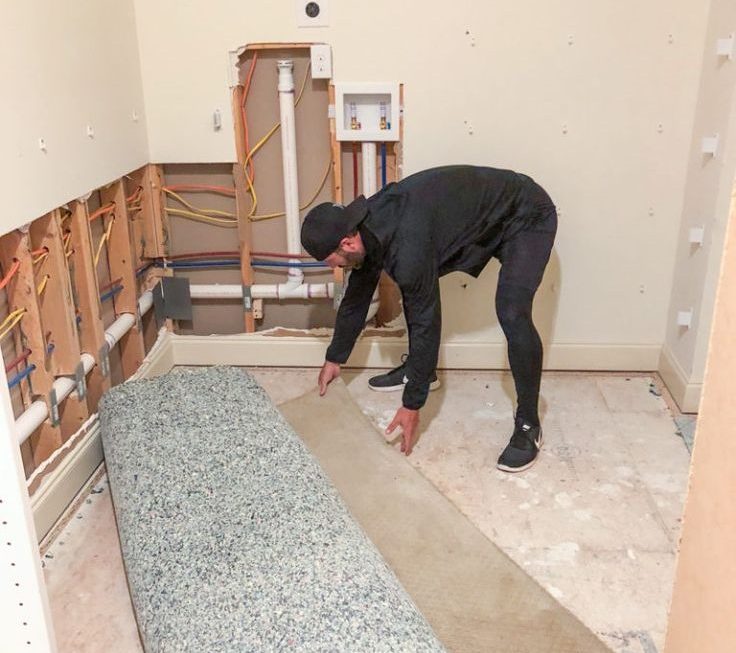 Introduction:
Introduction:
Dealing with a diarrhea accident on your carpet can be a challenging and unpleasant task. However, knowing how to effectively clean diarrhea out of your carpet is essential to minimize stains, odors, and potential health risks. In this comprehensive guide, we will explore various techniques, tips, and cleaning products to help you successfully remove diarrhea stains from your carpet. By following these simple steps, you can restore your carpet’s cleanliness and freshness.
 Some common materials used in carpet manufacturing:
Some common materials used in carpet manufacturing:
Carpets can be made from a variety of materials, each with its own characteristics and properties. Here are some common materials used in carpet manufacturing:
Nylon: Nylon is a synthetic fiber known for its durability, resilience, and stain-resistance. It is one of the most popular materials for carpets due to its ability to withstand heavy foot traffic and maintain its appearance over time.
Polyester: Polyester is another synthetic fiber that is soft, resistant to fading, and available in a wide range of colors and styles. It is known for its stain-resistance and affordability, making it a popular choice for residential carpets.
Wool: Wool is a natural fiber prized for its luxurious feel, durability, and excellent insulation properties. Wool carpets are known for their softness, resilience, and natural resistance to stains and soil. However, they tend to be more expensive than synthetic options.
Polypropylene: Polypropylene, also known as olefin, is a synthetic fiber that is resistant to stains, moisture, and fading. It is a durable material often used in outdoor or high-traffic areas due to its ability to withstand wear and tear.
Blends: Some carpets are made from a blend of different fibers to combine their individual properties. For example, a blend of nylon and polyester can provide a balance of durability and softness, while a blend of wool and synthetic fibers can offer the luxurious feel of wool with enhanced stain-resistance and affordability.
It’s important to consider the specific needs and requirements of the space when selecting a carpet material. Factors such as foot traffic, desired level of softness, stain-resistance, budget, and maintenance preferences should all be taken into account to choose the most suitable carpet material.
 Some potential risks and consequences of diarrhea on carpets:
Some potential risks and consequences of diarrhea on carpets:
When a carpet is affected by diarrhea, it can pose several hazards and concerns. Here are some potential risks and consequences of diarrhea on carpets:
Stains and Odor:
Diarrhea contains substances that can leave stubborn stains on carpets. These stains can be difficult to remove, especially if not treated promptly. Additionally, the organic matter in diarrheal waste can lead to strong and unpleasant odors that linger in the carpet fibers.
Hygiene and Sanitation:
Diarrhea contains bacteria, viruses, and other pathogens that can contaminate the carpet. This poses a risk to human health, especially if the carpet is not thoroughly and properly cleaned. The presence of pathogens can potentially spread diseases or infections, particularly if people come into direct contact with the affected carpet.
Mold and Mildew Growth:
If the diarrhea is not properly cleaned and the carpet remains damp or moist, it creates an ideal environment for mold and mildew growth. Mold can not only cause further damage to the carpet but also contribute to poor indoor air quality and pose health risks, including allergies and respiratory problems.
Damage to Carpet Fibers:
The acidic nature of diarrhea can damage the carpet fibers, causing them to weaken, fade, or even break. This can lead to irreversible damage to the carpet, requiring costly repairs or replacement.
Pest Infestation:
Decomposing organic matter and moisture from diarrhea can attract pests such as flies or carpet beetles. These pests can cause further damage to the carpet or even infest the surrounding areas of the property.
Psychological Impact:
The presence of a visibly soiled carpet due to diarrhea can cause distress, embarrassment, or discomfort for individuals living or working in the affected space. It can also affect the perception of cleanliness and hygiene in the environment.
To mitigate these hazards, it is important to address diarrhea on carpets promptly and appropriately. Proper cleaning and sanitization should be performed by following recommended guidelines and using suitable cleaning agents. For extensive or severe cases, professional carpet cleaning services may be required to ensure thorough and effective removal of stains, odors, and potential pathogens.
 Preparation and Safety Measures
Preparation and Safety Measures
Gather Supplies:
Before starting the cleaning process, gather the necessary supplies, including rubber gloves, paper towels, a plastic bag, warm water, mild dish soap, white vinegar, a spray bottle, and a clean sponge or cloth.
Safety Precautions:
Put on rubber gloves to protect your hands from any potential bacteria or germs present in the diarrhea.
Ensure proper ventilation by opening windows or turning on fans to minimize any unpleasant odors.
Removing Solid Waste
Scrape Off Excess:
Using a plastic bag or paper towels, carefully remove any solid waste from the carpet.
Be gentle to avoid spreading or pushing the waste further into the fibers.
Blotting with Paper Towels:
Place a few layers of paper towels over the affected area and gently press down to absorb as much liquid as possible.
Avoid rubbing or scrubbing, as it can push the diarrhea deeper into the carpet fibers.
Cleaning Solution and Stain Removal
Dilute the Cleaning Solution:
Mix a solution of warm water and mild dish soap in a spray bottle. Use approximately 1 tablespoon of dish soap for every cup of warm water.
Gently shake the bottle to ensure proper mixing of the solution.
Test in an Inconspicuous Area:
Before applying the cleaning solution to the stained area, test it in a small, inconspicuous spot on the carpet to ensure it does not cause any discoloration or damage.
Applying the Cleaning Solution:
Spray the cleaning solution onto the diarrhea stain, focusing on the affected area.
Allow the solution to sit for a few minutes to penetrate and loosen the stain.
Blotting and Repeat:
Using a clean sponge or cloth, gently blot the stained area, absorbing the cleaning solution along with the stain.
If the stain persists, repeat the previous steps until the stain is lifted.
Neutralizing Odors
Vinegar and Water Solution:
To neutralize any lingering odors, mix equal parts white vinegar and water in a spray bottle.
Lightly spray the vinegar solution on the affected area and allow it to air dry.
Baking Soda:
Sprinkle a generous amount of baking soda over the treated area.
Let the baking soda sit overnight to absorb any remaining odors, then vacuum it up the next day.
Professional Carpet Cleaning
Seeking Professional Help:
If the diarrhea stain remains or the odor persists after attempting the cleaning steps mentioned, it may be beneficial to consult a professional carpet cleaning service.
Professional cleaners have specialized equipment and solutions to effectively treat tough stains and odors.
 Conclusion:
Conclusion:
Cleaning diarrhea out of your carpet may be an unpleasant task, but by following the steps outlined in this comprehensive guide, you can effectively remove stains and odors. Remember to prioritize safety by wearing gloves and adequately ventilating the area. Prompt action, thorough blotting, and the use of mild cleaning solutions can help restore your carpet’s cleanliness. In cases where the stain or odor persists, professional carpet cleaning services can provide advanced solutions. Embrace the knowledge shared in this guide to effectively clean diarrhea stains from your carpet, ensuring a clean and fresh living environment.



